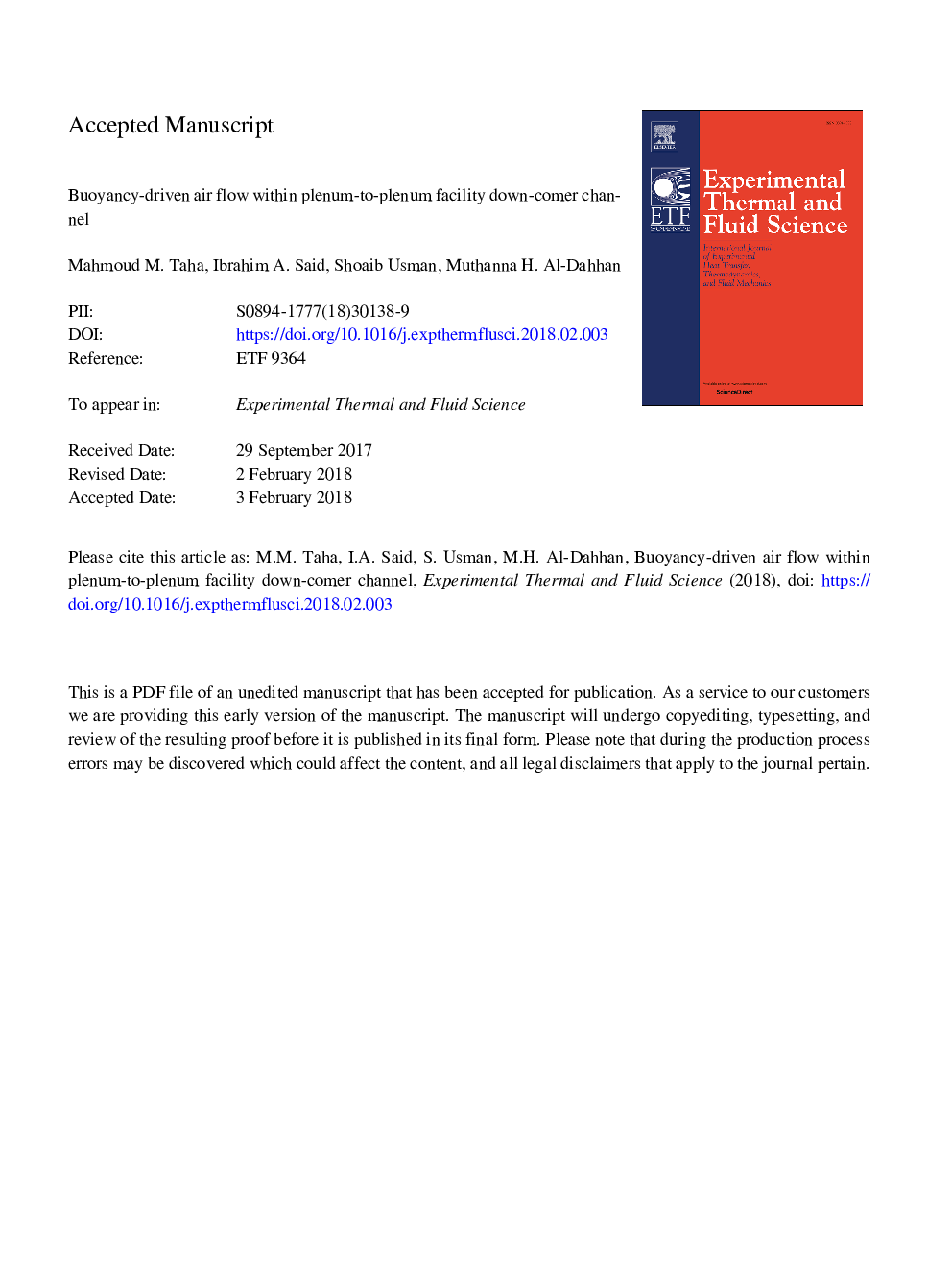| Article ID | Journal | Published Year | Pages | File Type |
|---|---|---|---|---|
| 7051760 | Experimental Thermal and Fluid Science | 2018 | 26 Pages |
Abstract
Reliable measurements of thermal and velocity fields were experimentally investigated under different natural circulation intensities in a dual channel facility designed and developed with a representative geometry of prismatic modular reactor core. Experiments were conducted under steady state conditions to obtain statistically stationary time series signals of temperature and velocity. Insignificant radial temperature variation was observed along the down-comer channel implying that the majority of supplied heat is removed through the upper plenum. Velocity results obtained emphasize the delicate nature of natural circulation phenomena in terms of flow destabilization, and recirculation penetration length. Observed air velocity distribution reveals that downward velocity is proportional to the extent of cooling applied to the setup. The calculated values of the dimensionless group Froude number (Fr) in the range of 2 to 10 indicate that air is dominated by momentum and is exiting the channel as a jet. Quantification of turbulent intensities implies that flow destabilization is noticeable along the down-comer channel particularly for the case of high cooling intensity. For 5 °C cooling water temperature, turbulent intensity (vrms/v) peaks at the mid-channel (z/Lâ¯=â¯0.5) reaching a value of 0.5. This value of turbulent intensity is much higher than the inlet (z/Lâ¯=â¯0.96) and outlet (z/Lâ¯=â¯0.04) turbulent intensities of 0.2 and 0.06 respectively. This destabilization is because of the flow reversal and heat conduction effects through stainless steel flanges connecting both channels. Current results provide detailed velocity and temperature variation which can be useful for validating computational fluid dynamics codes.
Related Topics
Physical Sciences and Engineering
Chemical Engineering
Fluid Flow and Transfer Processes
Authors
Mahmoud M. Taha, Ibrahim A. Said, Shoaib Usman, Muthanna H. Al-Dahhan,
